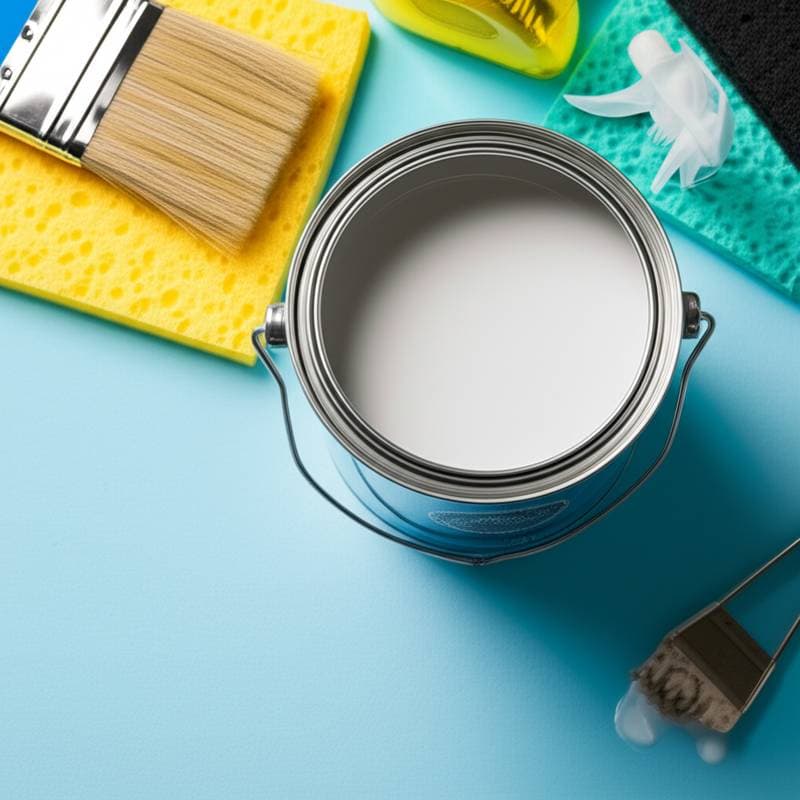Understanding the 2025 TSP Ban and Its Impact on Painting Costs
Trisodium phosphate, commonly known as TSP, has long served as a staple cleaner for preparing surfaces before painting. This powerful degreaser removed grease, grime, and contaminants effectively. However, environmental concerns over its phosphate content, which contributes to water pollution, lead to a nationwide ban effective in 2025.
The shift away from TSP requires adoption of alternative cleaning solutions. These substitutes often demand more thorough application and rinsing processes. As a result, painting preparation costs rise by 10 to 20 percent for most projects, depending on surface size and condition.
Homeowners and contractors must adapt to maintain high-quality results. The ban encourages sustainable practices that benefit both the environment and long-term paint performance. Early planning helps mitigate unexpected expenses.
Why Preparation Costs Are Increasing
Replacement cleaners, such as phosphate-free detergents and citrus-based formulas, prove less aggressive than TSP. They require multiple applications to achieve similar cleanliness levels. Additional rinsing steps ensure no residue remains, which adds to labor and water usage.
Surface types influence the cost hike. For instance, kitchens with heavy grease buildup need extended cleaning times. Exterior walls exposed to weather demand careful handling to avoid environmental runoff violations.
Local regulations further shape expenses. Some areas impose stricter disposal rules for cleaning wastewater. These factors combine to elevate overall preparation budgets, yet they foster safer, more effective painting outcomes.
Effective TSP Alternatives for Surface Preparation
Phosphate-free cleaners stand out as direct TSP replacements. These products dissolve oils and soils without harming waterways. Brands formulated for painting prep often include built-in rinse aids for efficiency.
Citrus-based degreasers offer natural cleaning power derived from orange peels. They break down stubborn residues on wood, metal, and masonry. Enzymatic cleaners provide another option, using biological agents to target organic contaminants gently.
Testing small areas before full application ensures compatibility with surfaces. Always follow manufacturer guidelines for dilution and contact time. These alternatives not only comply with the ban but also reduce health risks associated with TSP's harsh chemicals.
Professional Versus DIY Preparation Under the New Rules
Hiring professionals streamlines the transition to TSP-free methods. Trained crews employ specialized tools, such as pressure washers with adjustable nozzles and eco-friendly scrub brushes. These equipment investments yield residue-free surfaces ready for priming.
A professional team typically completes preparation for a medium-sized home in two to three days. This timeline accounts for thorough cleaning, drying, and inspection. In contrast, DIY efforts often extend to four to six days due to learning curves and limited tools.
Quality remains paramount. Proper preparation enhances paint adhesion and extends finish life by years. Professionals deliver smoother applications that resist peeling and fading, justifying the investment in expertise.
Budgeting and Cost-Saving Strategies
Anticipate a 10 to 20 percent increase in preparation expenses when quoting projects. For a standard interior repaint, this translates to an additional $200 to $500. Factor in cleaner purchases, which range from $20 to $50 per gallon.
Combine multiple rooms or surfaces into a single project to spread costs. Perform initial light dusting yourself to reduce professional hours. Opt for multipurpose cleaners that handle both interior and exterior tasks.
Schedule work during off-peak seasons, such as fall or winter, when contractor rates dip. Bulk purchasing of supplies through professional networks can lower material fees. These steps preserve budgets while ensuring compliance.
Getting Started with Your Project
Assess your surfaces for contamination levels. Gather recommended cleaners and safety gear, including gloves and ventilation masks. Test alternatives on inconspicuous areas to verify effectiveness.
Plan the sequence: clean, rinse, dry, and prime. Allow ample drying time between steps, especially in humid conditions. Document the process for future reference and warranty purposes.
Consult local professionals for tailored advice. They provide insights into regional regulations and optimal techniques.
Frequently Asked Questions
What is the average cost impact of the TSP ban on painting prep?
Most projects experience a 10 to 20 percent rise in preparation costs. For a medium-sized home, expect an added $100 to $300, covering cleaners and extended labor.
Which factors most influence the new surface prep costs?
Key elements include cleaner type, surface contamination degree, regional rules on water use, and rinsing requirements. Larger or dirtier areas amplify expenses.
How can I save money on surface prep under the new rules?
Group tasks into larger jobs, pre-clean lightly at home, and select versatile phosphate-free products. Booking in low-demand periods reduces labor fees.
Should I still hire a professional painter for TSP-free prep?
Professionals excel with new agents, ensuring clean, paint-ready surfaces. Their methods prevent adhesion issues like bubbling or early wear.
What are the best TSP alternatives for homeowners?
Reliable choices encompass phosphate-free detergents, citrus degreasers, and enzyme-based solutions. Each meets safety standards while delivering strong cleaning.
When is the best time to begin a painting project under the new regulations?
Target spring or fall for mild weather that aids drying. These periods see lower demand, easing scheduling and cost control.
Achieving Lasting Results with Sustainable Prep
Embracing TSP alternatives enhances project outcomes beyond cost considerations. Cleaner surfaces promote durable paints that withstand daily wear. Environmental compliance adds peace of mind for future generations.
Invest time in proper preparation to maximize value. The initial uptick in expenses yields finishes that endure longer and require less maintenance. Contact O'Connor Painting LLC for guidance tailored to your needs.



